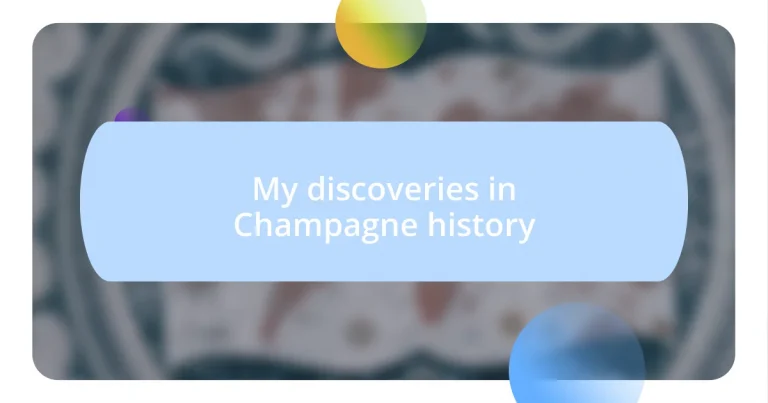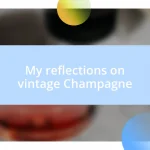Key takeaways:
- Dom Pérignon’s work in the 17th century established foundational techniques for Champagne production, enhancing its quality and characteristics.
- Madame Clicquot’s innovations in the 19th century, like riddling, significantly advanced production methods, improving clarity and taste.
- The 1927 Champagne Appellation law formally recognized Champagne’s unique qualities, safeguarding its tradition while embracing innovation.
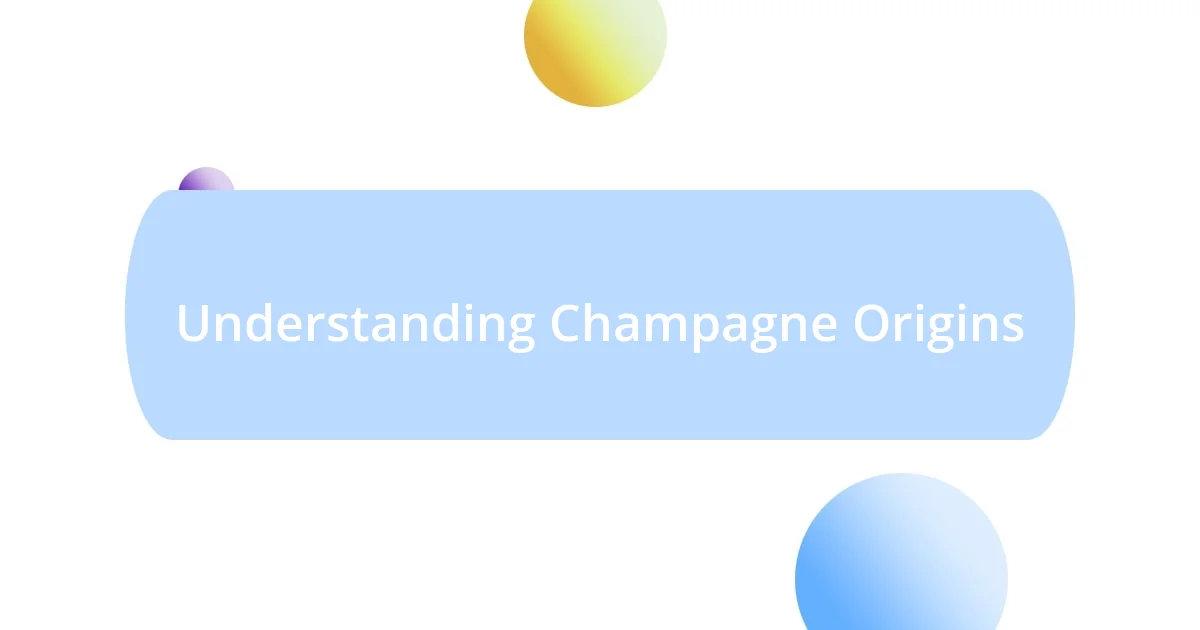
Understanding Champagne Origins
When I first dove into the history of Champagne, I was struck by how this exquisite sparkling wine has roots reaching back to Roman times. Imagine early Roman settlers cultivating vineyards in the cool, chalky soil of the Champagne region—what a scene! For me, it brought a sense of connection, realizing that the same land now producing some of the world’s finest wines was once tended by hands much like ours.
The Champagne we know today, with its effervescence and celebratory connotation, began taking shape in the 17th century when brilliant minds like Dom Pérignon explored ways to master the art of fermentation. Isn’t it fascinating how a monk’s curiosity and experimentation transformed wine? This pursuit of perfection speaks to the heart of Champagne’s story, inviting us to appreciate not just the bubbles in our glass, but the innovation and passion behind each bottle.
As I explored the region’s rich tapestry of history, I couldn’t help but feel a deep appreciation for the climate and soil, which create the unique terroir—an essential aspect of Champagne’s identity. Who would have thought that the very essence of Champagne is derived from these natural elements? It’s a reminder that great things often stem from the harmony between nature and human ingenuity.
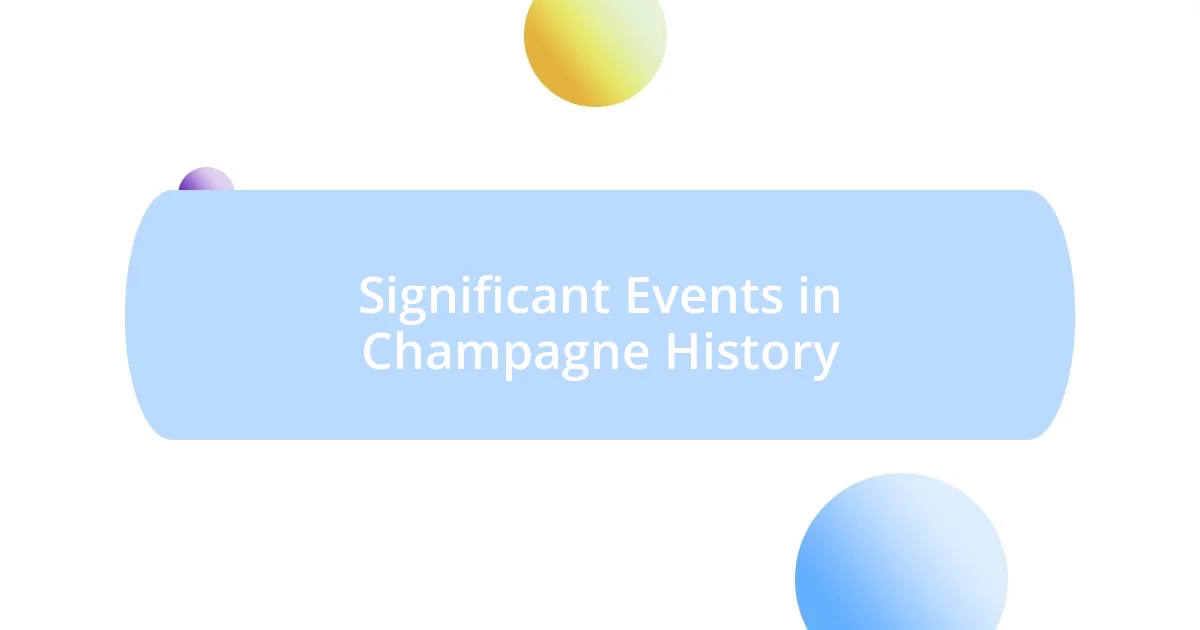
Significant Events in Champagne History
The 19th century was a pivotal time for Champagne, marked by the emergence of notable houses like Moët & Chandon and Veuve Clicquot. I remember visiting the Veuve Clicquot cellar and feeling the weight of history in those dimly lit tunnels. As I walked through the same spaces where the legendary widow, Madame Clicquot, innovated with riddling and blending techniques, I couldn’t help but be struck by her fierce determination. It was a true testament to how one person’s vision can shape an entire industry.
The turn of the 20th century brought both challenges and triumphs for Champagne producers, especially during World War I, which devastated vineyards across the region. I’ve seen photos of damaged estates, and it’s heartbreaking to think of the hard work that went into establishing those vineyards. Yet, during the interwar period, the industry slowly recovered, introducing new marketing strategies that positioned Champagne as a luxury item. It’s almost poetic how resilience in the face of adversity can lead to such significant shifts in perception.
Fast forward to today, the introduction of the Champenois’ legal protections in the 1927 Champagne Appellation law marked the formal recognition of the unique qualities of the region. This aspect resonates with me, as it emphasizes how important it is to safeguard tradition while embracing innovation. Experiencing a tasting of these protected wines, knowing their legacy, has deepened my respect for the craft and care that goes into each bottle—a true celebration of both history and mastery.
| Year | Significant Event |
|---|---|
| 1668 | Dom Pérignon begins his work at the Abbey of Hautvillers, laying groundwork for Champagne production. |
| 1810 | Madame Clicquot implements innovative techniques to enhance quality and taste. |
| 1927 | Champagne Appellation law establishes regulations to protect the integrity of the Champagne name. |
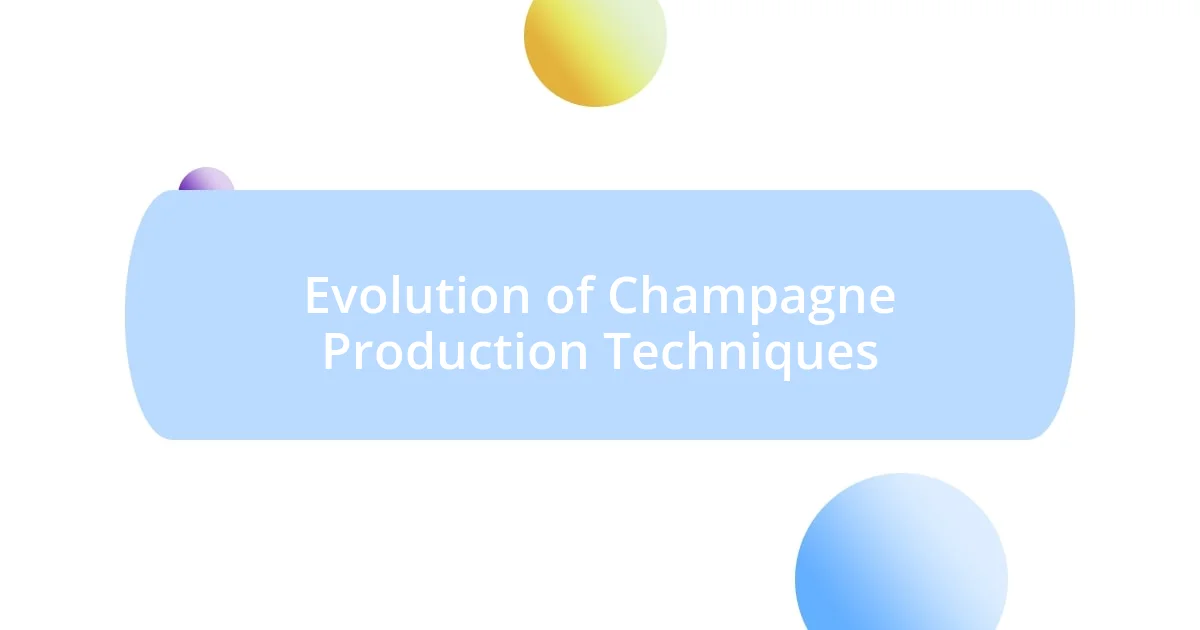
Evolution of Champagne Production Techniques
The journey of Champagne production has undergone remarkable evolution, reflecting both the ingenuity of its producers and advancements in technology. Early fermentation methods relied heavily on trial and error, but as I learned more, it was inspiring to see how, in the 19th century, techniques like riddling—developed by Madame Clicquot—dramatically improved the clarity and quality of the wine. I vividly remember tasting samples that showcased the finesse achieved through these innovations; each sip acted like a delicious historical lesson, a nod to the experts blending tradition with new knowledge.
- Introduction of secondary fermentation in the bottle, laying the foundation for sparkle.
- The development of riddling techniques in the early 1800s to remove sediment.
- The use of pneumatic presses in the 20th century for gentle extraction of juice.
- Implementation of modern refrigeration and temperature control for fermentation.
In my own explorations, I found it fascinating how the adoption of scientific approaches reshaped production. The incorporation of technology doesn’t detract from the artistry; instead, it enhances the craft. Visiting a boutique winery where a winemaker explained their precision monitoring of fermentation temperatures really struck a chord with me. It was a balance between artistry and science that allows us to enjoy such consistently high-quality Champagne today.
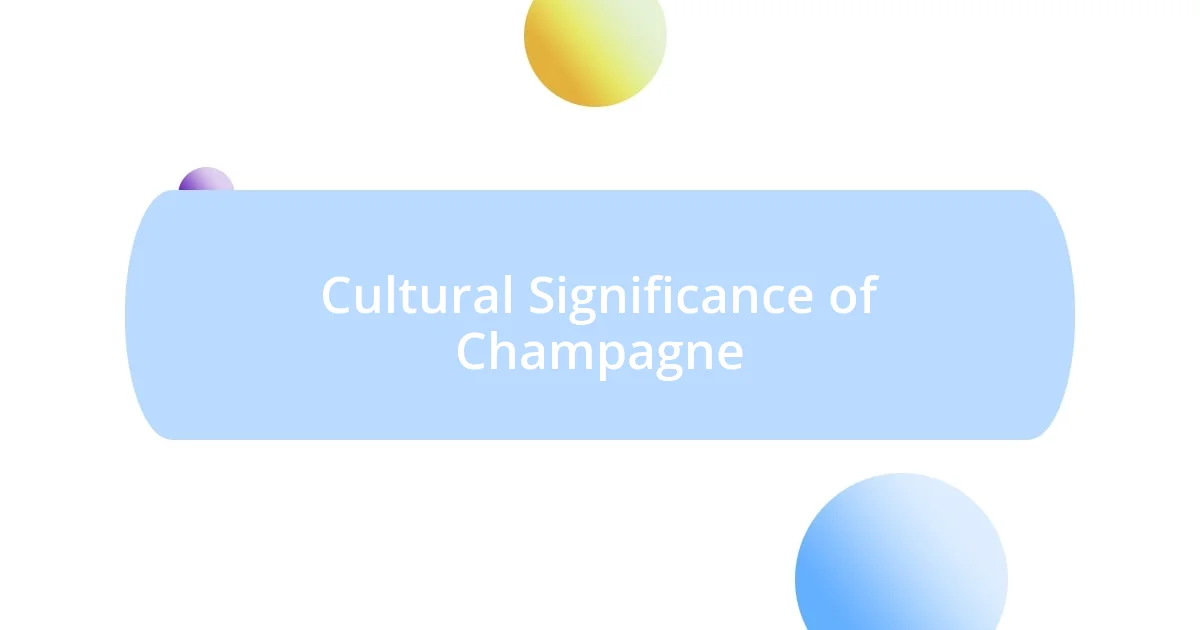
Cultural Significance of Champagne
Champagne has long been a symbol of celebration and luxury, intertwined deeply with significant life events. I still remember a wedding I attended where the clinking of Champagne flutes brought everyone together, filling the air with joy. It’s such moments that highlight how Champagne isn’t just a beverage; it signifies milestones, achievements, and connections among people. Have you ever noticed how a simple toast can elevate the atmosphere?
The cultural significance of Champagne extends beyond celebrations, touching on themes of perseverance and tradition. I had the chance to visit a family-owned vineyard in the Champagne region, where the owner shared stories of his ancestors who cultivated these lands through wars and economic downturns. Hearing his passion for maintaining their heritage reminded me that Champagne embodies resilience, tasting like history itself with each sip. Isn’t it incredible how a single region can carry so many shared human experiences?
When I think about Champagne, I also feel a sense of unity among those who appreciate it. During a tasting event, I found myself chatting with fellow enthusiasts, each sharing their favorite pairings and memories associated with the drink. That sense of community around a bottle speaks volumes about Champagne’s role in fostering connections—not just among friends and family, but even strangers brought together by a shared appreciation. Isn’t it beautiful how one drink can create a bond that transcends backgrounds?

Personal Insights and Discoveries
As I delved deeper into Champagne history, I was struck by the evolution of its production techniques. During a visit to a small vineyard, the winemaker opened up about the first time he used pneumatic presses. He described the difference in juice extraction as almost poetic; it felt like witnessing a transformation where each drop carried the essence of the grapes without being bruised. Isn’t it fascinating how a single tool can change an entire craft, making it even more expressive?
The artistry in Champagne is deeply intertwined with the innovations that shape its character. While exploring a cellar, I remember feeling a sense of awe as I gazed at the riddling racks—those humble wooden frames where bottles lay on their sides, slowly revealing their complexity. It made me ponder: how many stories of patience and craft exist behind each bottle? I couldn’t help but feel a kinship with those who have walked this path before us, perfecting their techniques over generations.
One of my most memorable discoveries was the role of temperature control in fermentation. At a workshop, I watched a master winemaker adjust the temperature settings with such focus, like a conductor leading an orchestra. It struck me how this precision not only enhances the flavors but also ensures consistency across vintages. Have you ever considered how much science lies behind these magical moments of enjoyment? Each glass of Champagne we sip is a product of meticulous care, bridging tradition and modernity in every bubble.












